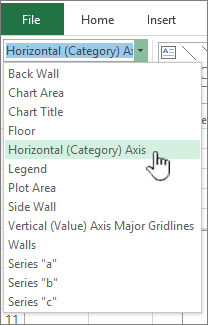

Worksheet worksheet = workbook.Worksheets

#CHANGE AXIS TYPE ON EXCEL FOR MAC HOW TO#
The example below demonstrates how to create a chart and specify its y-axis position using the Axis.Position property. To position an axis on the chart, use the Axis.Position property. To display or hide a primary axis, utilize the Axis.Visible property. An individual axis defined by the Axis object can be accessed using the indexer notation ( 0 for the category axis, 1 for the value axis and 2 for the depth axis if it is present).

If the chart type you selected supports axes, you can modify them by displaying axis tick marks and gridlines, changing the axis position, specifying the axis scaling, adding secondary axes, etc. But some charts, like a pie or doughnut chart, have no axes at all.
#CHANGE AXIS TYPE ON EXCEL FOR MAC SERIES#
3-D charts also have the depth (or series) axis along which the series names are displayed. Most charts have two primary axes: the category axis (X-axis), usually running horizontally at the bottom of the plot area, and the value axis (Y-axis), usually running vertically on the left side of the plot area. When you create a chart, its primary axes are generated automatically depending on the chart type.


 0 kommentar(er)
0 kommentar(er)
